Most brands focus heavily on driving online sales—but that’s not how many customers actually shop.
People check products online—read reviews, compare options, watch videos—but when it’s time to buy, they visit a physical store. They want to see, touch, or try the product before spending money.
This behavior is common.
In fact, 56% of all in-store purchases are influenced by online research.
This behavior is called ROPO: Research Online, Purchase Offline.
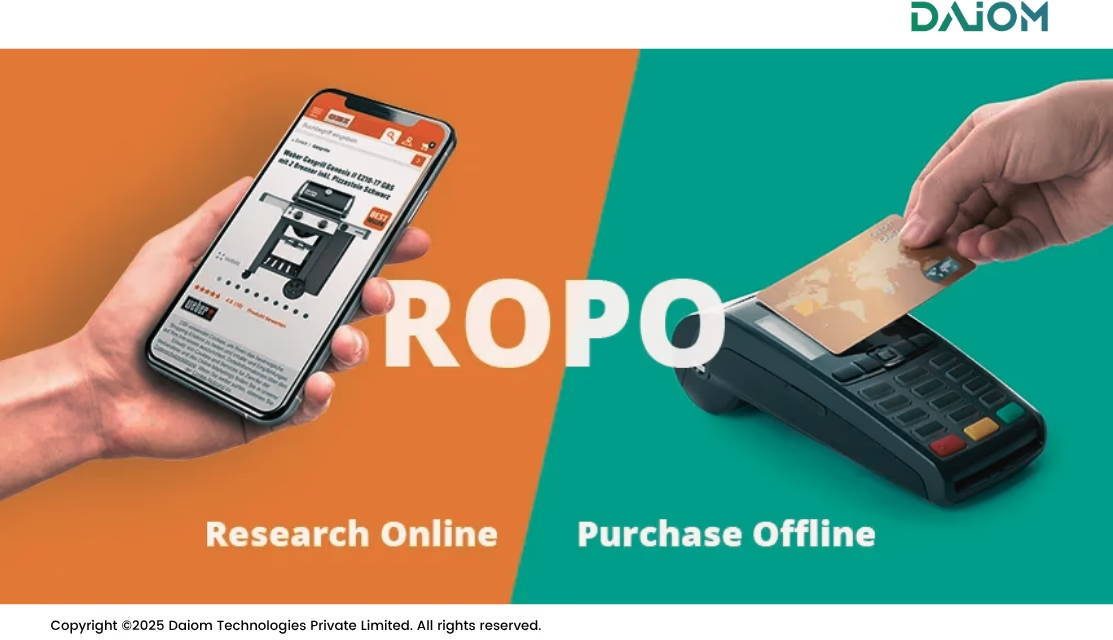
And if your brand isn’t tracking this, you are not able to make the most of your customer journey and may end up losing on sales. In this blog, we will break down what ROPO really means, why it matters more than ever, and how smart brands like The Sleep Company are using ROPO to grow faster than their competitors.
The ROPO effect has a substantial impact on retail, with 73% of consumers preferring to shop through multiple channels.
Table of Contents
1. What is ROPO?
ROPO stands for “Research Online, Purchase Offline.” In simple words, it describes how customers collect all product information online—like reading reviews, watching YouTube videos, checking comparisons—and then go to a store to buy the product.
Why do they do this?
Because some products are better seen, touched, or tried before buying. Like shoes, furniture, or mattresses. The internet helps them decide what to buy, but the store gives them confidence to complete the purchase.
For example, as per research, it is reported that 56% of online shoppers read at least one review before making a purchase. But they may not buy it online. Instead, they head to the nearest store.
Also Read – How To Scale Up Your Store Sales By Increasing Footfall?
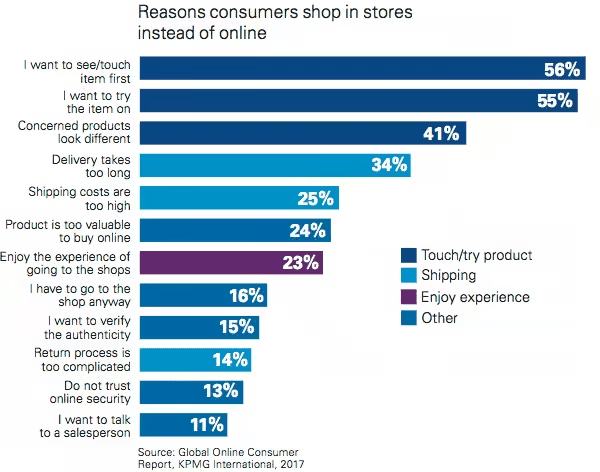
2. Why Should Brands Not Ignore ROPO?
Many brands today focus mainly on their online sales numbers. If a product—like a running shoe—doesn’t sell well online, they often decide to stop advertising it. But this approach can be a big mistake.
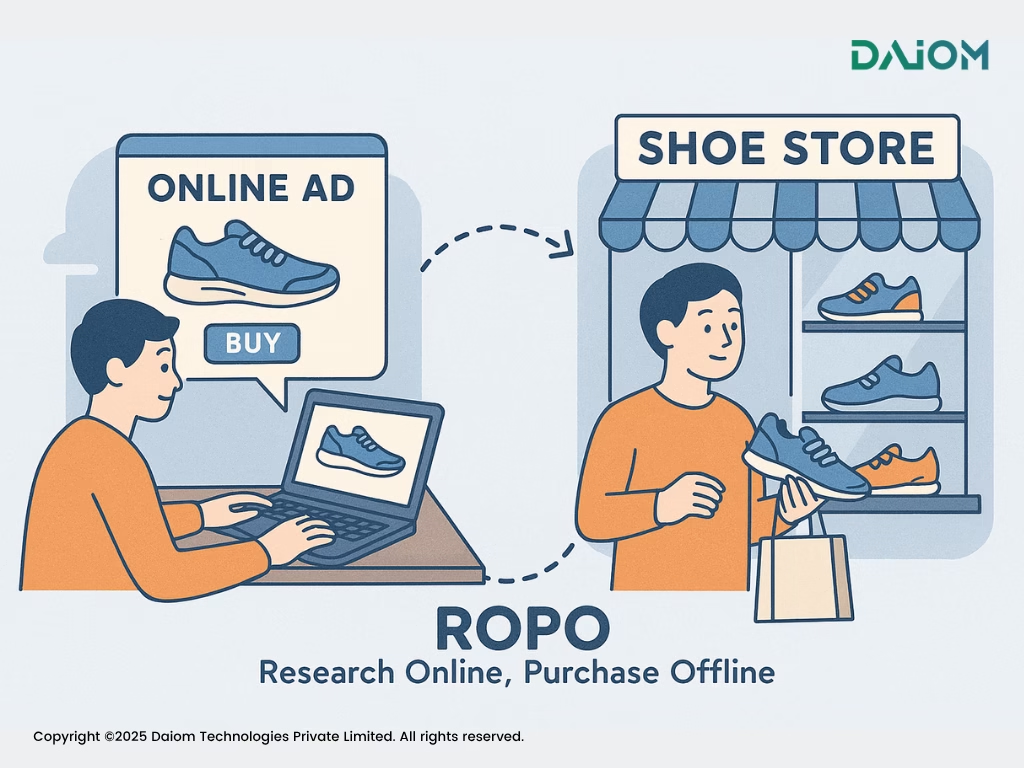
Here’s why:
- A product may have low online sales, but the online ads for that product can still be very effective. For example, someone might see an ad for a running shoe online, then decide to visit a physical store to try it on before buying.
- If the marketing team only looks at online sales data, they might think the ad isn’t working and stop promoting the shoe. However, stopping the ads could actually hurt overall sales, because fewer people will be inspired to visit the store and make a purchase.
This is where the concept of ROPO comes in.
By only focusing on online sales numbers, brands may risk losing customers who prefer to shop in person. Brands should remember that online advertising can boost both online and offline sales. Ignoring the impact of online ads on in-store purchases can lead to missed opportunities and lower total sales.
Also Read – Crafting Winning O2O Strategies for Omnichannel Growth
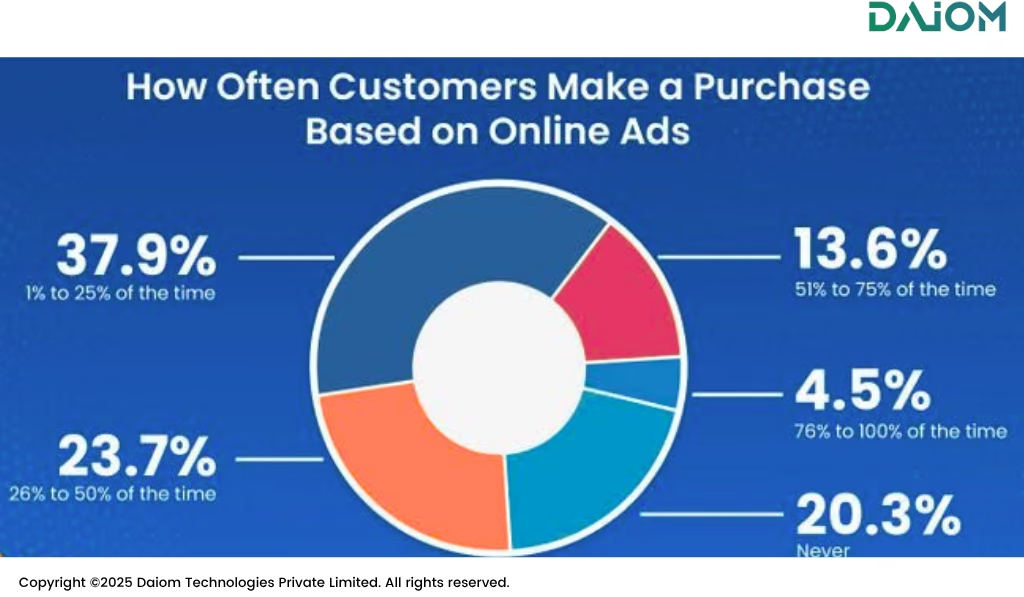
3. Why ROPO Is a Must-Have Strategy for High-Ticket Brands?
For high-involvement categories like furniture, jewellery, electronics, and mattresses, ROPO is no longer just a trend — it’s a necessity.
Here’s the pattern:
People research extensively online — reading reviews, watching videos, comparing prices. But when it comes to making the final purchase, especially for high-ticket or experience-based products, many prefer visiting a store to touch, feel, and get real-time answers.
We’ve seen this across categories, and even in our work with brands like The Sleep Company, where ROPO became a major growth driver. Though they began as an online-first brand, they quickly realised that customers were visiting their site to explore — but buying happened offline. They responded by opening offline experience centers in top cities, often within a 15-minute drive for customers. This shift played a key role in helping them scale rapidly from 0 to 100+ stores.
But this is not just about one brand — any business with a high-value product or a complex buying decision needs to think ROPO-first.
"We’re a digital-first brand, but customers wanted to touch and feel the product before buying. That’s why we started opening stores. Today, our experience centers are within 15 minutes' drive in top cities. People check us online, then visit our stores to buy."
Priyanka Salot, co-founder of Sleep Company
And to make ROPO work, brands must invest in a few key areas:
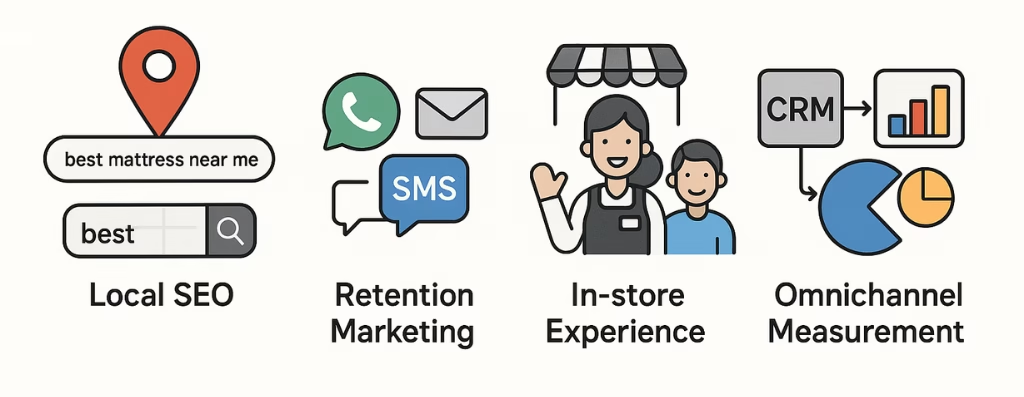
Local SEO: Ensure your stores are easily discoverable when someone searches “best mattress near me” or “jewellery showroom in Andheri.” Keep your Google Maps listings up to date, collect reviews, and use location keywords on your site.
Retention Marketing: Once someone walks into your store, the relationship doesn’t stop. Use WhatsApp, email, and SMS to re-engage and bring them back for accessories, upgrades, or referrals.
In-store Experience: ROPO works only when your store experience matches the promise made online. Train staff, design walk-ins around your product’s best moments, and solve doubts quickly.
Footfall Tracking: Use tools (like camera analytics or Google Store Visits data) to measure how many online visitors actually show up offline — and what improves conversion.
Omnichannel Measurement: Brands must integrate their online and offline data to get a full picture of what’s driving sales. This includes attribution modeling, CRM integration, and campaign measurement.
4. High ROPO Product Categories
ROPO (Research Online, Purchase Offline) is not equally important for all products. Some categories see much stronger ROPO behavior because customers want to experience the product in person before buying.
Here’s a breakdown:

- Fashion: People prefer trying clothes before buying. They check size, fit, and feel in-store.
- Beauty Products: Many want to try products or get advice from in-store beauty consultants.
- Sports Equipment: Shoes, cycles, or gear need to be tested physically.
- Furniture and Lighting: It’s hard to judge comfort, size, and looks online. Shoppers want to see them in person.
- Household Items: If you urgently need a kitchen tool, you may check online for stock—but go buy it offline to get it immediately.
5. How Brands Can Optimize for ROPO?
To fully capitalize on the ROPO effect (Research Online, Purchase Offline), brands need a clear strategy that connects online activity with in-store sales.

- Identify ROPO Products: First, identify which of your products are most influenced by ROPO. Use data analytics to see which items drive a lot of store visits after customers research them online—these are often products that shoppers want to see, touch, or try before buying, such as fashion, electronics, or furniture.
- Set the Right Online Prices: Next, set the right online prices. Even if a customer plans to buy in-store, they will often compare prices online first. Keeping your online prices competitive and consistent with your offline prices builds trust and reassures shoppers that they’re getting a fair deal, no matter where they buy. This is especially important because many ROPO shoppers spend time comparing deals across different sellers before making a decision.
- Adjust Marketing: Finally, adjust your marketing. Don’t stop running ads for products just because their online sales are low. Remember, online ads can drive significant in-store traffic, even if those sales aren’t immediately visible in your online data. Promote your products across both channels, and use messages like “Available in-store today” or “See it in person at your local branch” to encourage store visits.
6. 5 Steps to Measure ROPO Effect
To truly understand how online ads drive offline sales, brands need to connect digital activity with in-store behavior using several practical methods.
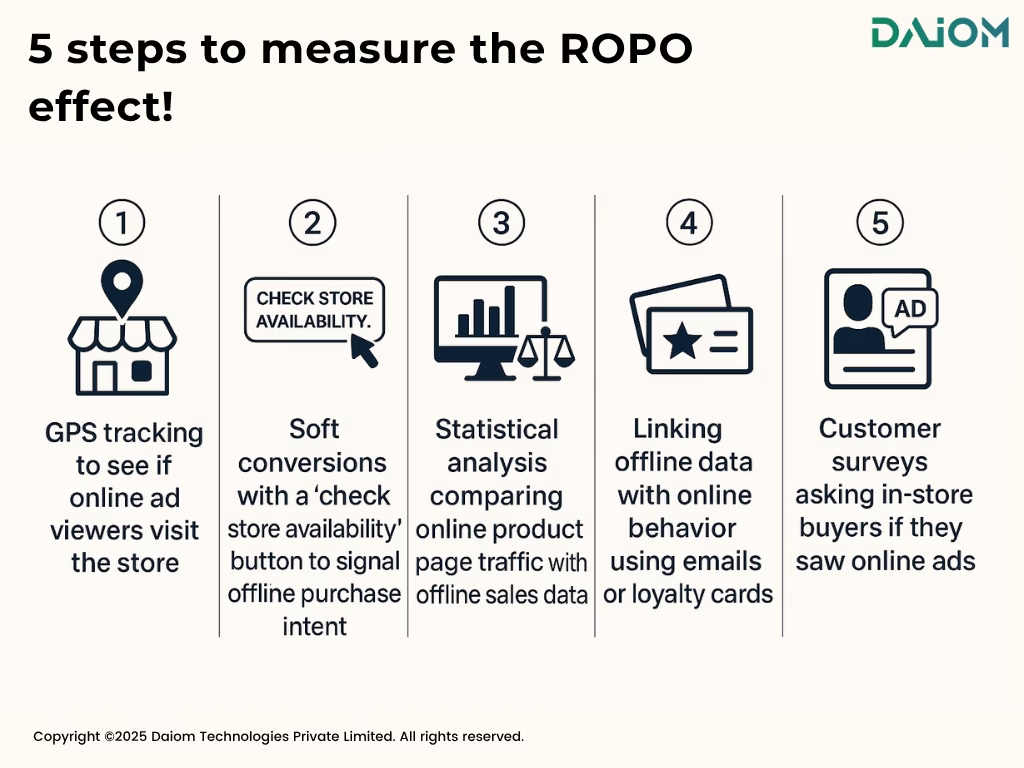
- Step 1: Start with GPS tracking, which lets you see if people who viewed or clicked your online ads actually visit your physical store. Platforms like Google Ads use a mix of GPS signals, Wi-Fi connections, Bluetooth beacons, and location history to estimate store visits with high accuracy, helping you see the real-world impact of your campaigns.
- Step 2: Next, encourage soft conversions by adding features like a ‘check store availability’ button on your website. When customers click this, it signals their intent to visit your store, even if they don’t buy online. These soft conversions reveal valuable intent data that pure sales numbers can miss.
- Step 3: Use statistical analysis by comparing how many people visit your product pages online with your offline sales data. If a product page gets a lot of traffic but online sales are low, yet in-store sales are strong, it’s a clear sign that online interest is driving offline purchases.
- Step 4: To get an even clearer picture, link offline data with online behavior by using tools like email addresses or loyalty cards. For example, if a customer signs up for your newsletter online and later uses the same email or loyalty card in-store, you can connect their online research with their offline purchase. This integration builds a seamless view of the customer journey.
- Step 5: Finally, don’t underestimate the power of customer surveys. Simply ask in-store shoppers why they came in—did they see your online ad or check your website first.
Some customers purchase offline because they hate shipping. 34% of customers don't want to wait for items to arrive, and 25% complain that shipping costs are too high sometimes.
7. Conclusion
ROPO (Research Online, Purchase Offline) is more than just a passing trend; it’s a fundamental part of how people shop today. Successful brands like The Sleep Company have embraced ROPO to build customer trust, increase foot traffic to their stores, and grow their overall sales.
If you’re selling products that shoppers want to see, touch, or try—such as fashion, beauty items, furniture, or sports equipment—ROPO should be at the heart of your strategy.
Also read our blog – How To Drive Store Footfall In An Omnichannel Digital World?
Subscribe to our NEWSLETTER!


